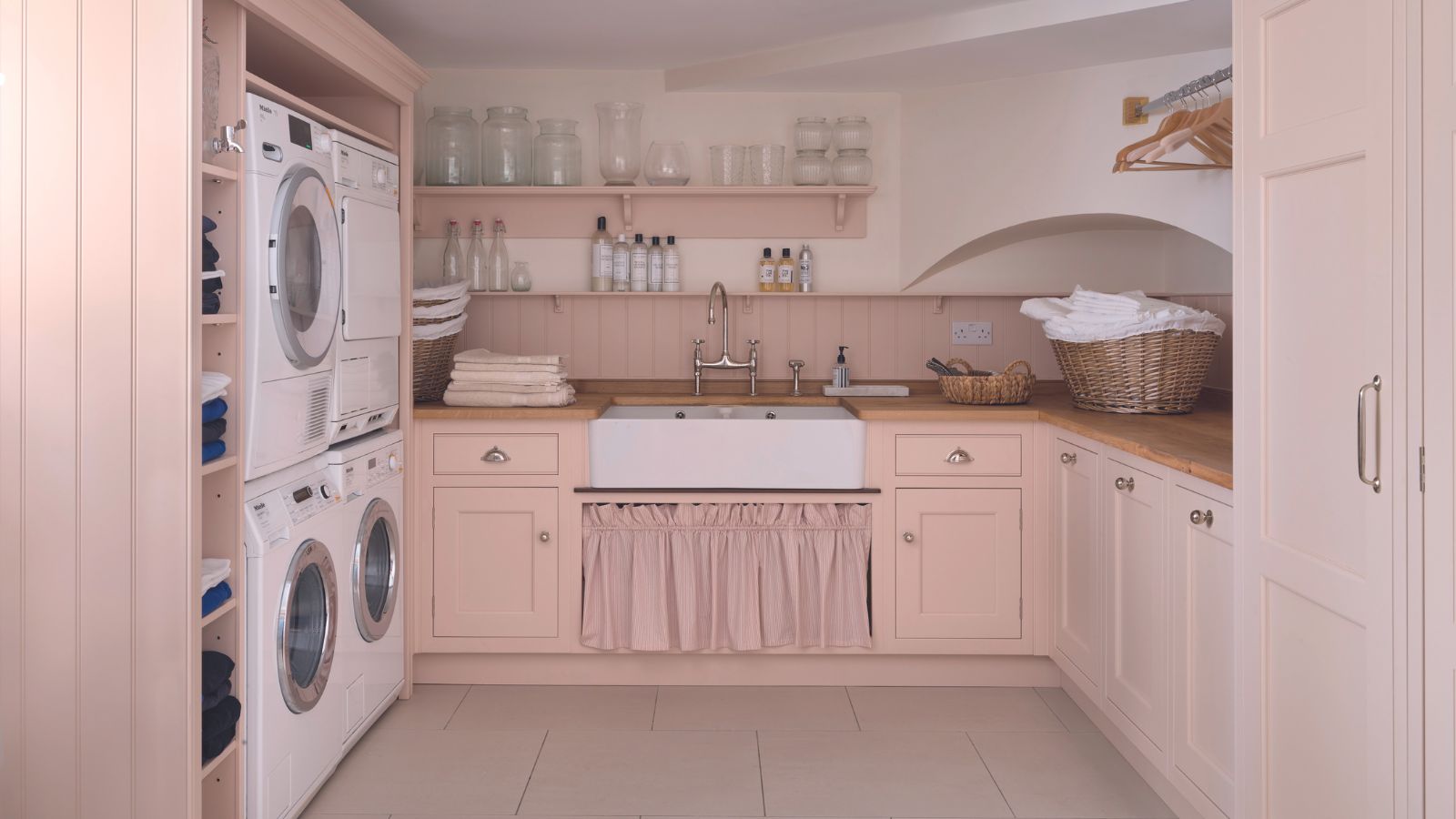
A well-designed and well-equipped laundry room can be a pleasure to use, helping save time on tasks and keeping the laundry pile under control, while cabinetry painted in a stylish hue with blind or sink skirt in patterned linen or cotton can add style and individuality.
In a busy world, creating a sense of organization at home has become ever more important. ‘Laundry rooms are increasingly popular,’ says Richard Moore, design director of Martin Moore. ‘They act as perfect “spill over” areas, keeping laundry and other clutter neatly out of sight and helping to maintain calm and order in the main social hubs of the house, including the kitchen.’
Use these expert tips, and practical advice to create the perfectly design laundry room.
How to design a laundry room
From where to place your laundry room to practical layout tips to laundry room makeover ideas for existing spaces, this is where to find out all you need to know about designing a laundry.
1. Find the best place for your laundry room
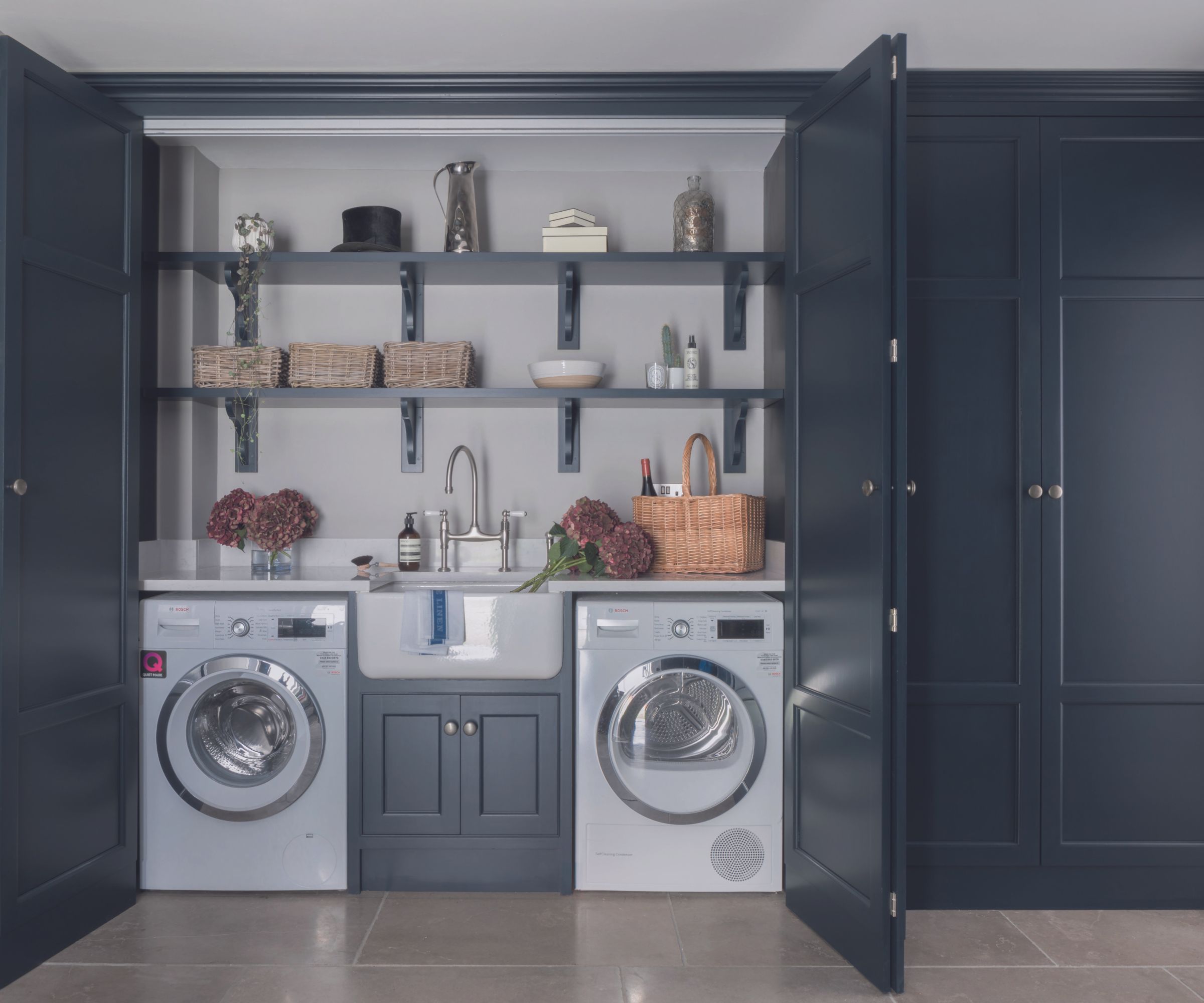
While a large laundry room in the basement out of sight and earshot may be a luxury, even a compact space or section of an apartment kitchen, utility room or mudroom can be made useful. And there's no doubt that having a laundry room upstairs near your bathroom can be incredibly convenient, saving you having to carry laundry up and down the stairs constantly.
'It pays to be imaginative, because you may be surprised what you can fit behind tall cabinet doors in otherwise unused areas of your home,’ suggests Camilla Pringle, director of Peden & Pringle, who created a laundry center with sink and laundry storage tucked neatly behind tall bi-fold doors in a recent project.
If you are tucking your laundry room near or in rooms in which you will likely be occupying while the washing machine or clothes dryer run, ensure they are have a low decibel rating (you might see it listed as 'dB') so that they aren't really noisy when running.
2. Plan the design carefully
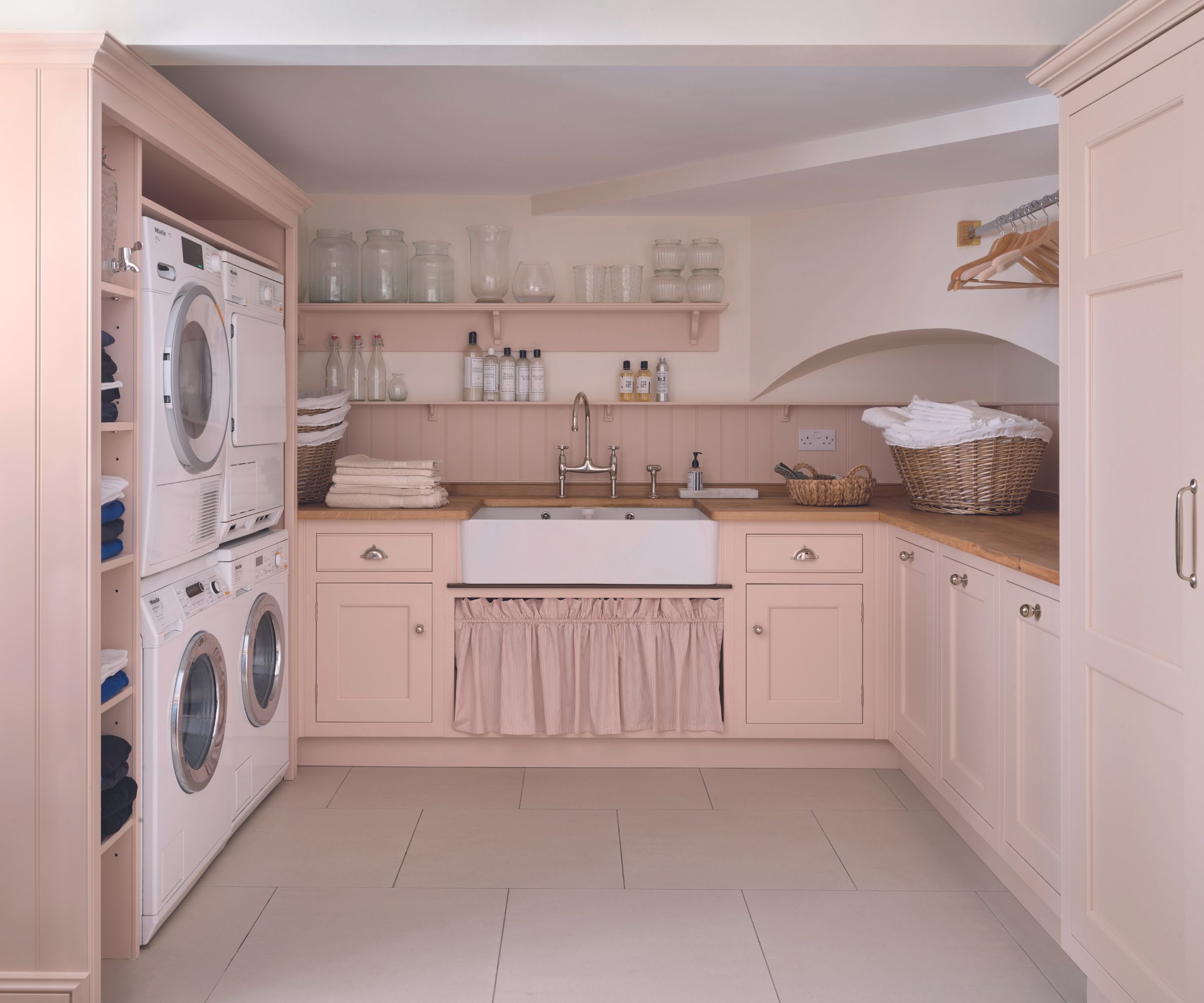
Just as with any supplementary space, such as a pantry or dressing room, a laundry room design will always be more successful when it reflects that of the room it's connected to.
However, if your laundry room is entirely separate and behind closed doors, this could be your excuse to have fun with the decor, using colors and wallpapers that you might not dare to in the kitchen, for example.
Whatever you choose, ensure installation of all the fixtures and fittings is done to a high quality, and that the flooring and countertop materials in particular are impervious to splashes and drips from both water and cleaning chemicals.
3. Get the laundry room layout right
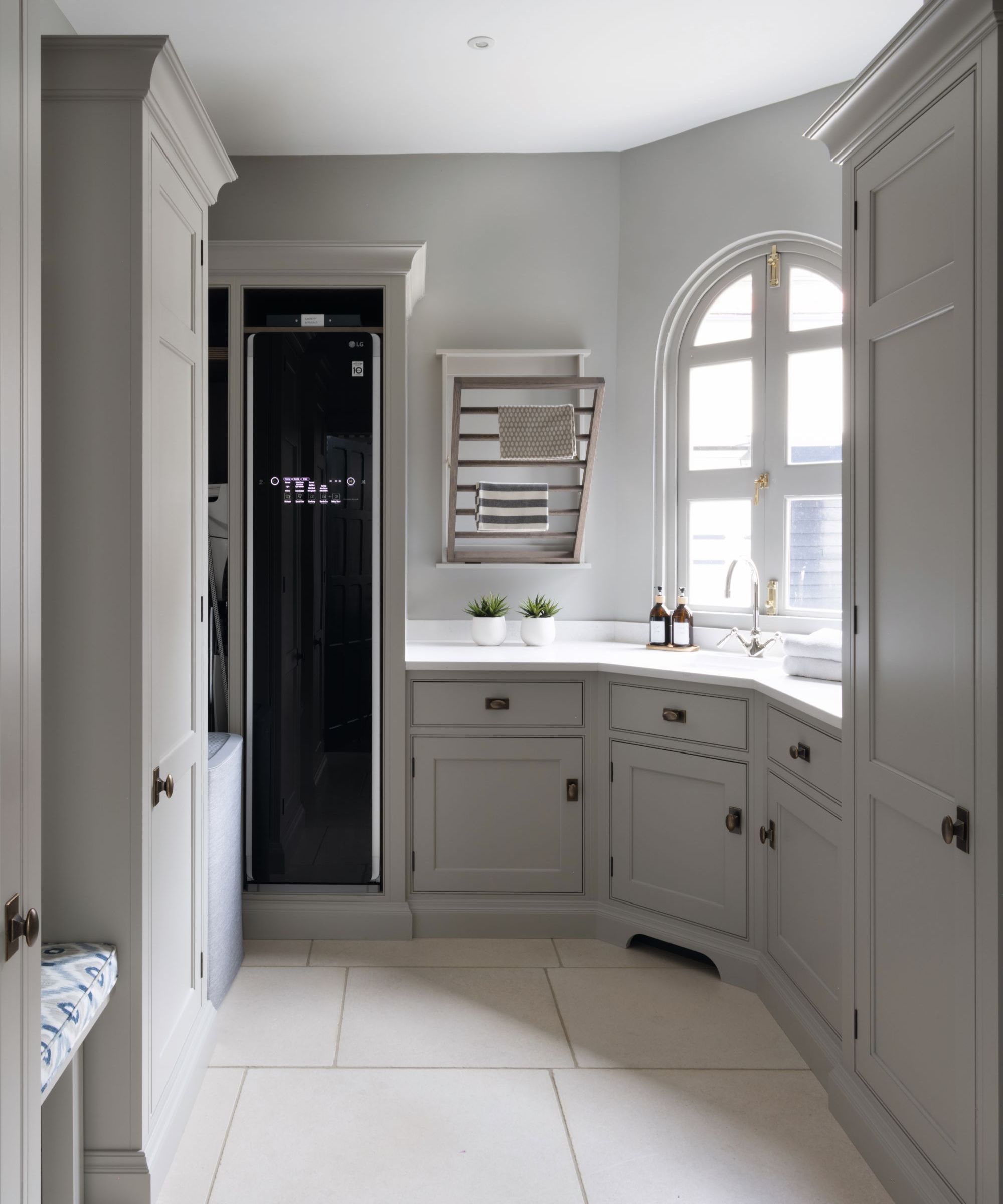
When you are planning the layout think carefully about how you want to organize your laundry room based around the tasks you will perform in there: sorting, drying, folding, hanging and ironing. Zoning the space into wet and dry areas will also make the laundry room more convenient to use, and cuts down on plumbing and installation work.
‘A laundry room should ideally have a separate washer and dryer, a tall laundry closet with an internal divide for the ironing board to stop it falling over each time you open the door, laundry room shelves for cleaning products, and a sink is handy for soaking and hand washing,’ advises Richard Moore, who also suggests fitting a laundry shoot from upstairs bedrooms if space and budget permit.
A drying rack or wall- or ceiling-hung rail for items that cannot go into the dryer and spacious laundry countertops for folding clothes are handy, as are built-in slots for laundry baskets – consider personalized baskets for individual family members.
Remember that all wall- or ceiling-hung options will save you floor space and be good solutions for smaller or multi-purpose spaces. This can also include a pull-out or wall-hung ironing board, hidden in a closet or between two tall closets.
Look to include further laundry room cabinets if your laundry room is large enough – they can be used to hide away everything from out-of-season clothes to shoes, and if lockable or high up, cleaning products you want to keep away from children.
Lots of space? Add in a center island or folding table. This can be used for further storage beneath and on top of the countertop, and of course, makes laundry sorting more comfortable.
If the laundry room will be visible from a bedroom, bathroom or kitchen, look to hide the washer and dryer behind doors or with a clever layout.
4. Consider appliances carefully
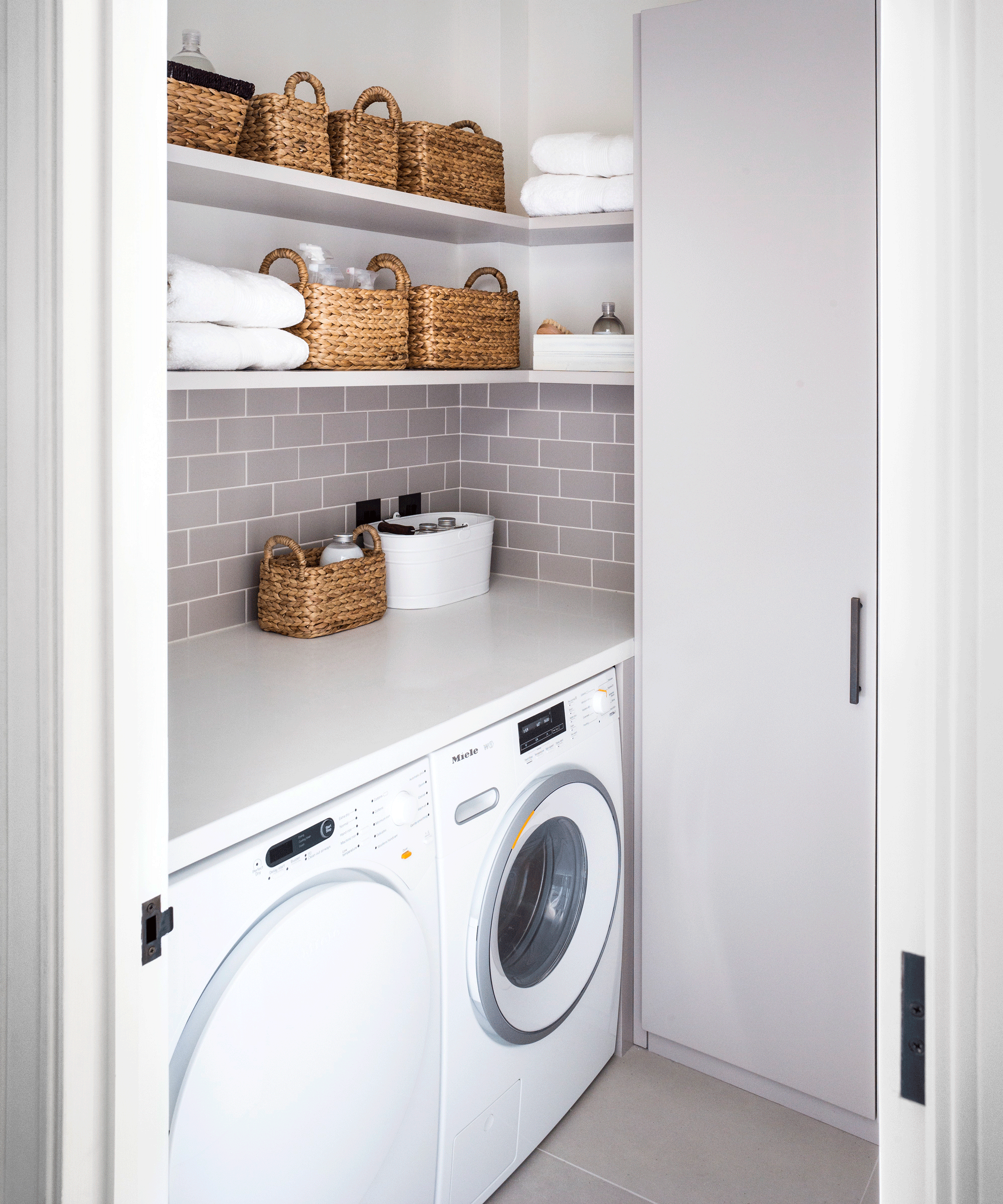
In a small laundry room, you may be best choosing a combined washer dryer that's front opening in order to allow for countertop space above.
However, for larger families and homes, doubling up on appliances is useful.
‘Laundry appliances can be placed side by side with the doors opening in opposite directions for convenience, or stacked on top of each other to save space, secured using a stacking kit,’ explains Alastair Cooke, laundry manager, Miele.
Some stacking kits are available with an integrated countertop for folding laundry from the dryer or drawer for storing laundry pods and dryer balls. Kiss Core's laundry stacking kit at Amazon is highly rated.
You can also have your washer and dryer raised off the floor (with storage built into the cavity beneath if needed) to make front-loaders more accessible.
For your washing machine, choose a drum size according to your household size and needs – a compact washer (2.30-2.45 cubic feet) may suit a two-person household; while a standard or high-efficiency top-load washing machine (3.1-4 cubic feet) may be right for a large family or for those who wash large items frequently.
Washing machines use an energy label, with ENERGY STAR certified clothes washers use about 20% less energy and about 30% less water than regular washers.
‘Go for the best energy rating you can afford, as this will save you money in the long run,’ advises Alastair Cooke. ‘Also look for machines that have load-sensor capabilities as this will save on water consumption.’
The latest smart washing machines can be controlled via an app on your phone for added convenience.
‘Heat pump dryers use substantially less energy and are gentler on clothes than the more traditional technologies,’ notes Alastair Cooke.
Some dryers feature a sensor drying system, automatically ending the cycle when the load is dry, preventing wasted energy.
Whatever you choose, ensure you measure up correctly for the appliances, and take into account the floor space around or in front of them that you'll need: front loading machines require more space in front to allow for door opening and laundry unloading, for example.
5. Ensure lighting and ventilation are spot on
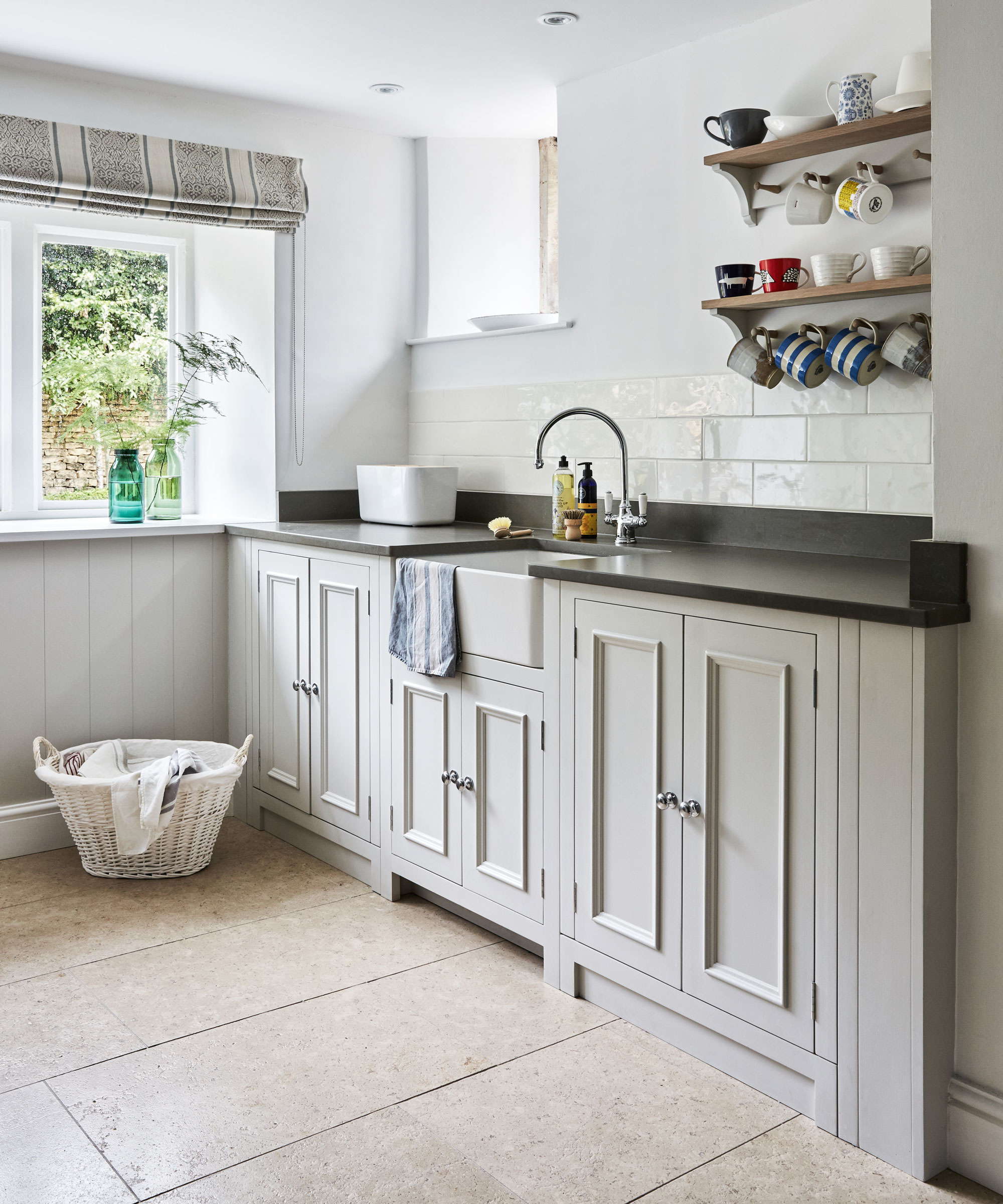
An opening window or door that allows for both natural daylight and ventilation is always the preferred option, with a door also allowing you the opportunity to roll out any mobile drying racks for a little sunlight.
However, it is also worth making space for an extractor, dehumidifier and heated laundry drying rack like this one from Amazon if you live in a cool or wet climate where you can't always count on the weather.
It is likely that you will often be working in your laundry room early in the morning or late in the evenings, so ensure task lighting is practical and focussed, too. Use all the lessons you've taken from planning kitchen lighting to get this right.
FAQs
What are the requirements of a successful laundry room?
A laundry room must, first and foremost, be functional and practical. For this, you will need plenty of hanging and drying space, a washer and dryer that can cope with your household's demands, and countertop and sink space for folding, stacking, sorting and soaking. Good ventilation, the option of heating and practical lighting are also a must, as is plenty of cabinet space to hide away laundry products and equipment.
Where should a washer and dryer be placed?
A washer within a laundry room are best placed in a 'wet zone' alongside the sink, while the dryer might be on the other side of the washer near the drying rack. Either way, both are best placed next to each other, and will need space either in front for unloading, with countertop space above, or above, if you have a top-loading machine.
Though the best size for a laundry room is thought by design professionals to be around 10ft square minimum, this is just a guide. If you feel you can carve out a practical space, even beneath the stairs to the next story up, you will benefit from having a dedicated space.







